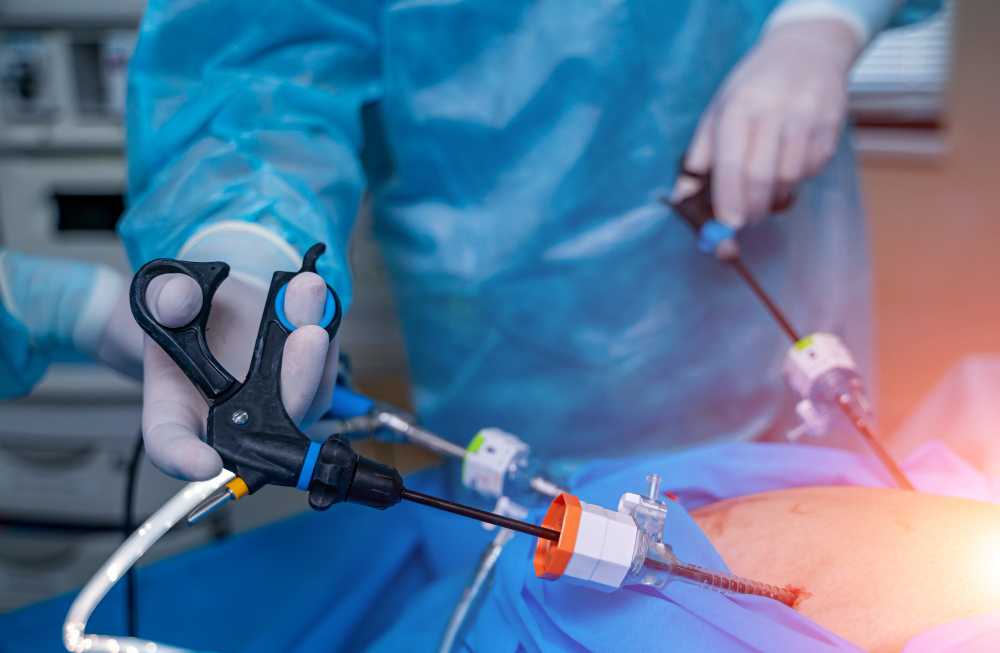Home » Urology
Procedures and Interventions
Vasectomy is a form of male birth control that cuts the supply of sperm to your semen. It’s done by cutting and sealing the tubes that carry sperm. Vasectomy has a low risk of problems and can usually be performed in an outpatient setting under local anesthesia. Before getting a vasectomy you need to be certain you don’t want to father a child in the future. Although vasectomy reversals are possible, vasectomy should be considered a permanent form of male birth control.
A hydrocele (HI-droe-seel) is a type of swelling in the scrotum that occurs when fluid collects in the thin sheath surrounding a testicle. Hydrocele is common in newborns and usually disappears without treatment by age 1. Older boys and adult men can develop a hydrocele due to inflammation or injury within the scrotum. A hydrocele usually isn’t painful or harmful and might not need any treatment. But if you have scrotal swelling, see your doctor to rule out other causes.
When to see a doctor
See your doctor if you or your child experiences scrotal swelling. It’s important to rule out other causes of the swelling that might require treatment. For example, a hydrocele might be associated with a weak point in the abdominal wall that allows a loop of intestine to extend into the scrotum (inguinal hernia).
A baby’s hydrocele typically disappears on its own. But if your baby’s hydrocele doesn’t disappear after a year or if it enlarges, ask your child’s doctor to examine the hydrocele again.
Symptoms of an enlarged prostate include:
- finding it difficult to start peeing
- straining to pee
- having a weak flow of urine
- “stop-start” peeing
- needing to pee urgently and/or frequently
- needing to get up frequently in the night to pee
- accidentally leaking urine (urinary incontinence)
- Leaking urine can happen when you feel a sudden need to pee and cannot stop some pee leaking out before you get to a toilet. This is called urge incontinence.
- Leaking urine can also happen when you strain. For example, when you cough, sneeze or lift a heavy object. This is called stress incontinence.
The most common form of leaking is when a small amount of urine dribbles into your underwear after peeing.
Cystoscopy is a procedure to look inside the bladder using a thin camera called a cystoscope. A cystoscope is inserted into the urethra (the tube that carries pee out of the body) and passed into the bladder to allow a doctor or nurse to see inside. Small surgical instruments can also be passed down the cystoscope to treat some bladder problems at the same time.
Surgery to remove the cyst:
A large cyst that’s causing symptoms may require surgery. To access the cyst, a surgeon makes several small incisions in your skin and inserts special tools and a small video camera. While watching a video monitor in the operating room, the surgeon guides the tools to the kidney and uses them to drain the fluid from the cyst. Then the walls of the cyst are cut or burned away. Surgery is rarely performed for simple cysts. The procedure is more often used for complex cysts with changes that may be cancer.
Urethrotomy, also known as direct vision internal urethrotomy, is a surgical procedure used to treat urethral stricture disease.
It is an outpatient surgery that involves the use of a urethrotome or a surgical knife passed through a cystoscope to widen a narrowed urethra. Urethrotomies are generally performed only in men because urethral strictures in women are very, very rare.
If you complain of symptoms such as pain when urinating, urinary tract infections, blood in the urine, urination, and inability to empty your bladder completely, your doctor may suspect a narrowing of the urethra (the tube that drains urine from your bladder). bubble).








